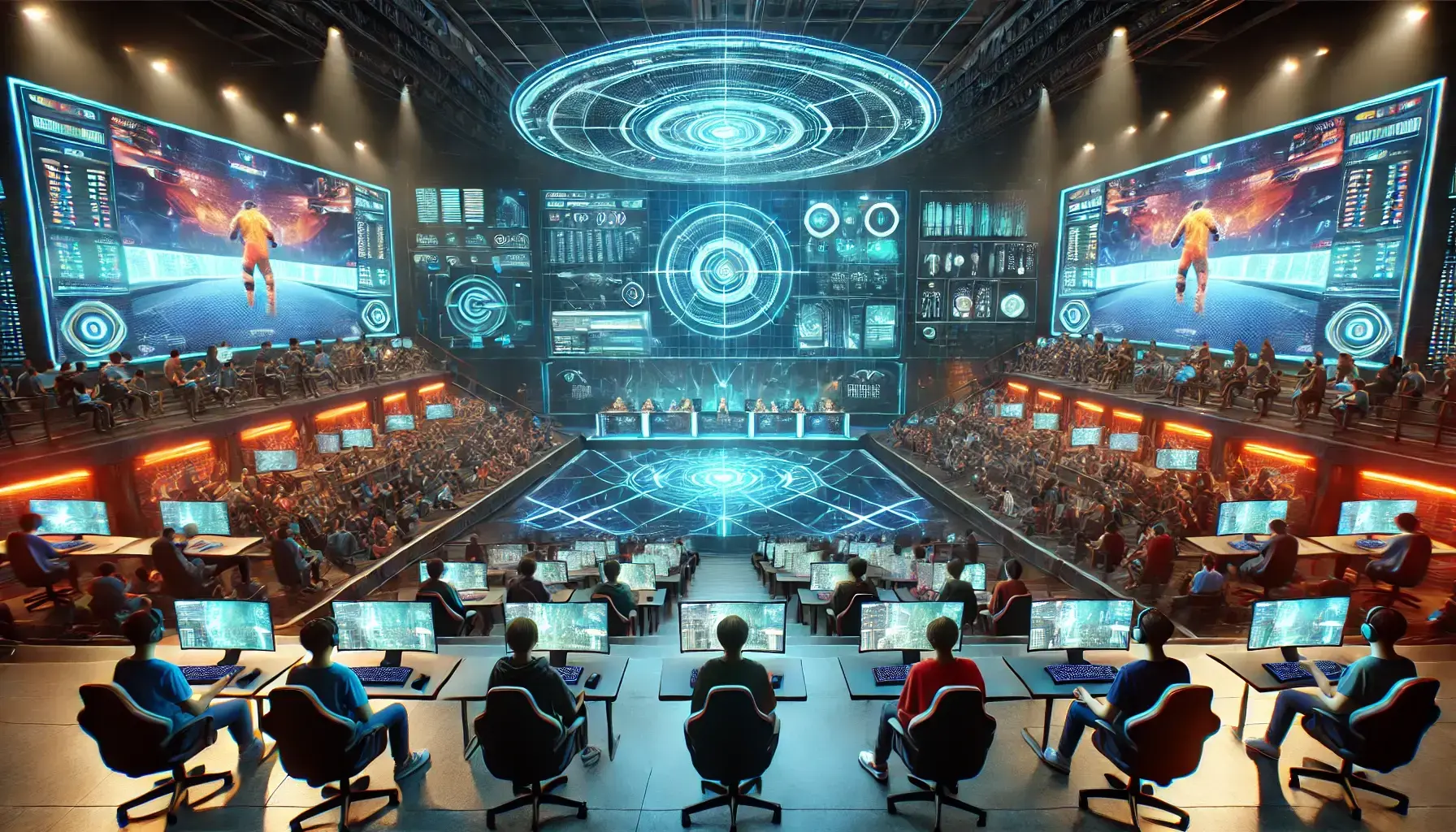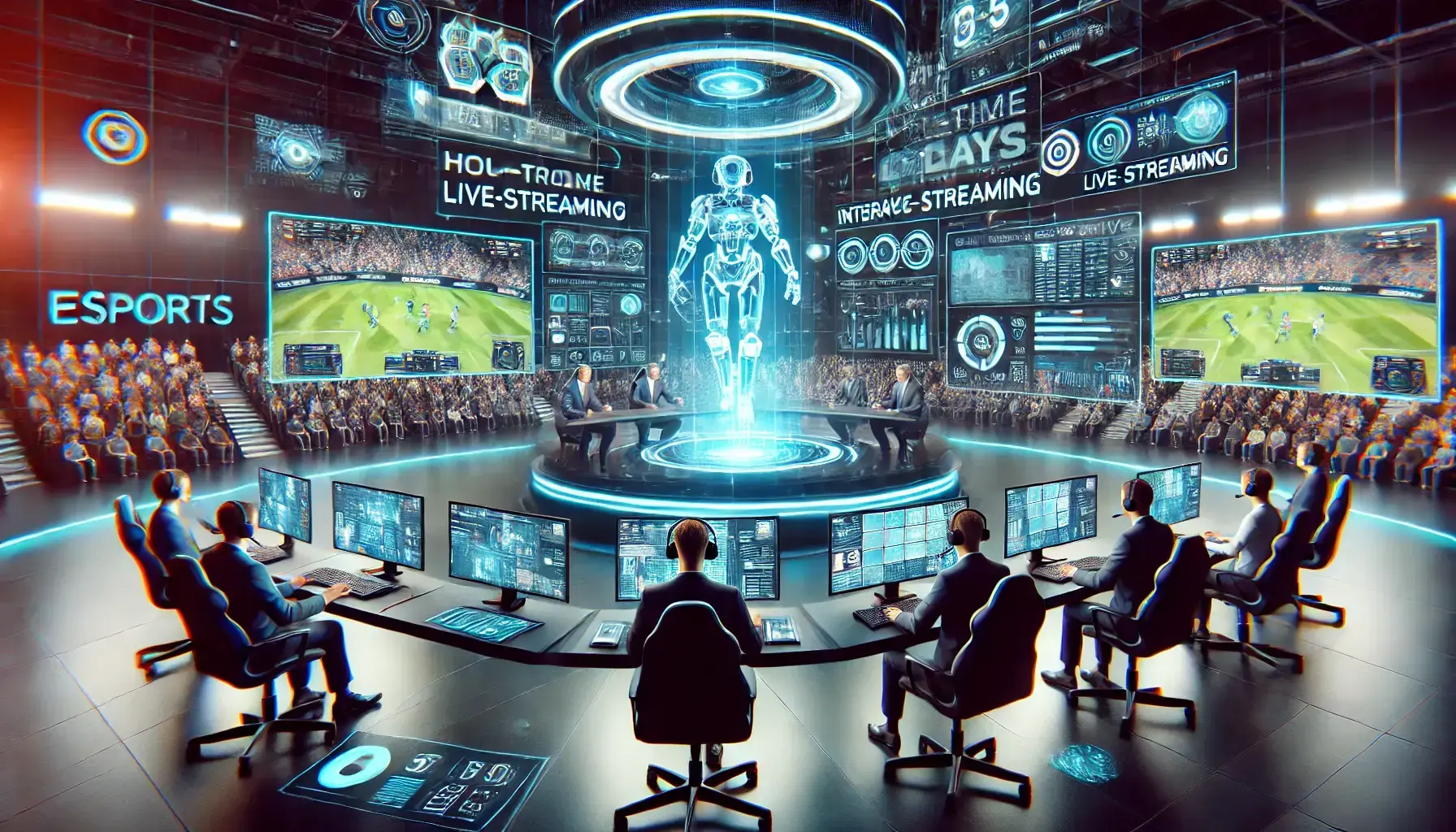
Esports has evolved from a niche hobby into a billion-dollar global industry, attracting millions of players and spectators worldwide. As technology advances, so too does the competitive gaming scene, with innovations reshaping everything from player performance to audience engagement.
One of the biggest shifts in esports is the integration of cutting-edge technology, such as AI-driven coaching, blockchain-based rewards, and virtual reality tournaments. These advancements are not only enhancing gameplay but also making esports more accessible and immersive.
We will be looking at impactful trends shaping the future of esports, including how AI is refining training methods, how blockchain is revolutionizing in-game economies, and how augmented reality is changing the way fans experience competitive gaming. The future of esports is not just about better graphics and faster processors—it’s about redefining the very nature of competition.
Expanding Accessibility: How Tech Is Opening Up Esports
As esports continues to grow, accessibility has become a key focus. Technological advancements are breaking down barriers, allowing more players to compete at a high level, regardless of hardware limitations or platform preferences.
Cloud Gaming and Low-Latency Streaming
- Removing Hardware Limitations: Cloud gaming services like NVIDIA GeForce Now and Xbox Cloud Gaming allow players to run high-performance games on low-end devices. This levels the playing field, ensuring that more aspiring esports players can participate without expensive gaming rigs.
- Reducing Input Lag: Low-latency streaming technology ensures that cloud-based esports competitions are responsive, making remote play more viable in professional tournaments.
Cross-Platform Play: Unifying the Competitive Scene
- Bridging Consoles and PCs: Many modern esports titles now support cross-platform play, allowing players from different devices to compete in the same matches. This eliminates the traditional divide between console and PC players, increasing the talent pool for competitive events.
- Standardized Input Balancing: With improved controller and mouse balancing mechanics, competitive integrity is maintained across different platforms.
AI-Powered Matchmaking: Fairer and More Competitive Games

- Skill-Based Matchmaking Improvements: AI-driven matchmaking systems analyze player behavior, reaction times, and in-game decisions to create balanced lobbies. This ensures fairer matches and a more competitive environment.
- Adaptive Ranking Systems: Some games are introducing dynamic ranking systems that adjust based on real-time performance rather than just win/loss ratios, making skill progression more accurate.
As matchmaking systems become more sophisticated, high-level competition in titles like Call of Duty: Warzone continues to evolve. Some players seek ways to refine their in-game awareness and accuracy, particularly in competitive battle royale settings where precise tracking and tactical positioning are crucial. Resources such as enhanced Warzone gaming cheats provide insights into enemy movements and strategic play, offering an additional layer of information for those aiming to improve decision-making in competitive environments.
The Rise of AI and Data Analytics in Esports Training
Artificial intelligence and data analytics are transforming the way esports athletes train and compete. By providing real-time insights, predictive analysis, and personalized coaching, AI is revolutionizing skill development and strategic planning in competitive gaming.
AI Coaching Assistants: Real-Time Performance Feedback
- Automated Game Analysis: AI-driven coaching platforms analyze gameplay footage and provide detailed reports on decision-making, aim accuracy, movement efficiency, and reaction speed.
- Personalized Improvement Plans: Advanced AI assistants suggest tailored drills and strategies based on a player's weaknesses, helping them refine their skills faster.
- Real-Time Feedback: Some AI systems now offer live coaching during gameplay, alerting players to positioning mistakes, poor weapon choices, or inefficient tactics.
Biomechanics and Motion Tracking: Enhancing Reflexes and Precision
- Hand and Eye Coordination Training: Motion-tracking technology can analyze player inputs, helping improve reaction times and precision aiming.
- Ergonomic Performance Optimization: AI-powered biometric monitoring can suggest adjustments in hand placement, posture, and even stress levels to enhance long-term performance.
Data-Driven Strategy Development: Outplaying Opponents with Analytics
- Opponent Behavior Analysis: AI scrapes data from competitive matches to detect trends, player tendencies, and common mistakes—giving esports teams an edge in tournaments.
- Predictive Win Probability: Advanced machine learning models can simulate match outcomes based on player statistics, helping teams refine their tactics before crucial games.
With AI-driven training tools, players can gain deeper insights into their gameplay and refine their skills at an unprecedented level. As esports continues to evolve, AI will likely become an essential component of competitive gaming strategy.
Augmented and Virtual Reality: The Next Frontier for Immersive Esports
The line between the digital and physical worlds is blurring as augmented reality (AR) and virtual reality (VR) technologies gain traction in esports. These innovations are redefining how games are played, watched, and experienced, creating a more immersive competitive scene.
VR Esports Tournaments: Competing in Fully Immersive Environments

- New Competitive Games Built for VR: Titles like Echo VRand Zenith demonstrate the potential of VR-based competitive gaming, requiring full-body movement and spatial awareness.
- Expanding Beyond Traditional Esports Genres: VR introduces new mechanics that emphasize physical interaction, breaking away from traditional keyboard-and-mouse playstyles.
- Challenges and Hardware Limitations: While VR esports is still developing, improvements in headset comfort, tracking accuracy, and network stability are making competitive VR gaming more viable.
Augmented Reality HUDs: Enhancing the Spectator Experience
- Live In-Game Stats Overlays: AR can display real-time player stats, heatmaps, and match analytics for audiences watching live events.
- Interactive Fan Engagement: AR-powered apps let spectators access additional player insights, switch between camera angles, and even replay key moments from different perspectives.
- AR for Casters and Analysts: Broadcast teams can utilize holographic-style overlays to break down strategies and illustrate complex game mechanics more effectively.
Physical-Digital Hybrid Games: Bridging Esports and Traditional Sports
- Motion-Based Competitive Play: Games incorporating physical activity—like Beat Saberor Blaston—showcase a new genre of esports where reaction time and endurance are just as important as strategy.
- Mixed-Reality Arenas: Future esports arenas could integrate AR elements, allowing players to interact with digital obstacles or power-ups in real-world spaces.
As AR and VR technologies evolve, they have the potential to transform esports into a more physically interactive and visually engaging spectacle, redefining how both players and audiences experience competitive gaming.
Blockchain and Cryptocurrency: Reshaping Esports Economy
Blockchain technology is introducing new ways to manage in-game assets, tournament winnings, and player rewards. From decentralized prize pools to NFT-based cosmetics, esports is embracing blockchain for security, transparency, and new revenue streams.
Key Innovations in Blockchain Esports
✅ Decentralized Prize Pools & Smart Contracts
- Traditional tournament payouts can be slow and prone to disputes.
- Smart contractsautomate prize distribution, ensuring instant and transparent payments based on predetermined conditions.
- This eliminates middlemen and reduces fraud in esports prize distribution.
✅ NFT-Based Skins, Collectibles & Digital Ownership
- Players can now own and tradeunique in-game assets as NFTs.
- These digital items, like exclusive weapon skins or team-branded jerseys, hold real-world value and can be resold.
- NFT integration allows esports organizations to monetize limited-edition digital merchandise.
✅ Play-to-Earn & Cryptocurrency Rewards
- Some esports platforms reward players with crypto-based incentives for participating in tournaments.
- Play-to-earn modelslet users accumulate tokens based on performance, which can be used in-game or exchanged for real money.
- This system introduces new financial opportunities for both professional and casual players.
✅ Enhanced Security & Anti-Fraud Measures
- Blockchain’s immutable ledgerprevents match-fixing and fraudulent transactions.
- Player stats, contract agreements, and earnings can be recorded transparently, reducing exploitation.
While blockchain in esports is still evolving, its potential for secure transactions, player-driven economies, and decentralized ownership could transform competitive gaming finance. As more games integrate blockchain technology, esports monetization will likely become more transparent and player-centric.
The Future of Esports Broadcasting and Spectator Experience
Esports viewership has skyrocketed in recent years, and new technologies are changing how fans watch and engage with competitive gaming. The days of passive spectating are being replaced by interactive features, AI-driven insights, and immersive viewing experiences.
One of the most significant advancements is interactive livestreaming, where viewers can influence matches in real time. Platforms like Twitch and YouTube Gaming are experimenting with audience-driven mechanics, allowing fans to vote on in-game events, select player perspectives, and access live analytics. This shift is making esports broadcasts more engaging, encouraging deeper viewer participation.
AI is also reshaping esports commentary. Instead of relying solely on human casters, AI-generated insights can now provide real-time breakdowns of player strategies, performance comparisons, and predictive match outcomes. This allows for personalized commentary, where viewers can choose a style that fits their expertise level—casual summaries for newcomers or in-depth analysis for seasoned players.
Another major breakthrough is VR and holographic viewing. Virtual reality allows fans to step inside the game, spectating from a first-person perspective or hovering over the battlefield like a coach. Meanwhile, holographic technology could bring esports events to life in physical spaces, where fans can watch 3D projections of matches in real-time.
With these innovations, esports broadcasting is becoming more immersive, interactive, and tailored to individual preferences. As technology advances, the spectator experience will continue evolving, making esports as engaging to watch as it is to play.
Ethical and Regulatory Challenges in the Evolving Esports Landscape
As esports grows, so do the challenges surrounding fairness, security, and player well-being. Addressing these issues is crucial for the industry’s long-term success.
🛡️ AI-Cheat Detection Systems
✔️ Advanced algorithms now detect aimbots, wallhacks, and script-based cheats in real-time.
✔️ Machine learning improves cheat detection by analyzing unusual player behavior.
✔️ Automated bans are reducing the impact of cheaters on competitive integrity.
🎰 Gambling and Betting Concerns
✔️ Esports betting is booming, but with it comes the risk of match-fixing.
✔️ Regulations are tightening to prevent underage gambling and fraud.
✔️ Blockchain-based betting platforms are increasing transparency.
🧠 Esports Player Welfare
✔️ Long training hours can lead to burnout and mental health struggles.
✔️ Organizations are investing in psychological support and better contracts.
✔️ Player unions are emerging to protect wages, benefits, and career longevity.
Esports is rapidly evolving, and so are the ethical dilemmas that come with it. Tackling these issues head-on will help ensure a fair and sustainable competitive gaming scene.
Esports is evolving faster than ever, driven by breakthroughs in AI, blockchain, VR, and data analytics. These technologies are making competitive gaming more accessible, immersive, and financially rewarding while also introducing new challenges in fairness and regulation.
As the industry grows, the line between traditional sports and esports continues to blur, with innovations shaping everything from player training to spectator experiences. The future of competitive gaming isn’t just about playing—it’s about how technology enhances every aspect of the experience.
With these advancements unfolding, one question remains: How will esports continue to push the boundaries of competition in the coming years?







